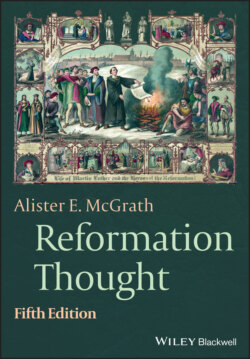Читать книгу Reformation Thought - Alister E. McGrath - Страница 22
The Growth of Regional and National Power
ОглавлениеPart of the explanation of this development lies in the localization of power in regional rulers, which became significant at this time. By the first decade of the sixteenth century, some fundamental shifts in power had taken place across Europe. The power of the pope had diminished, as the power of secular European governments had increased. In 1478, the Spanish Inquisition was established, with power over clergy and religious orders (and eventually also over bishops). Yet this was an instrument of the Spanish state, not the Spanish church. Control of this system of courts rested not with the pope, but with the Spanish king. The Concordat of Bologna (1516) gave the king of France the right to appoint all the senior clergy of the French church, effectively giving him direct control of that church and its finances.
Across Europe, the ability of the pope to impose a reformation upon his church was steadily diminishing. Even if the will to reform had been there in the later Renaissance popes (and there are few indications that it was), their ability to reform the church was gradually slipping away. This diminishment in papal authority did not, however, lead to a decrease in the power of local or national churches, which continued to exercise major influence over nations. It was the ability of the pope to control such local or national power that declined during our period. The German, Swiss, and English reformations illustrate this point well.
Protestant reformers often allied themselves with regional or civic powers in order to achieve their programs of reform. Luther appealed to the German nobility and Zwingli to the Zurich city council to support their reforming projects, pointing out the benefits which would accrue to both as a consequence. For reasons we shall explore presently (pp. 261–3), the English Reformation (in which political factors tended to overshadow theological issues, which were generally treated as being of secondary importance) is not typical of the European movement as a whole.
The continental Reformation proceeded through a symbiotic (and occasionally opportunistic) local alliance of theological reformers and state or civic authorities, each believing that the resulting Reformation was to their mutual benefit. The reformers were not unduly concerned that they gave added authority to their secular rulers by their theories of the role of the state or the “godly prince”: the important thing was that the secular rulers supported the cause of the Reformation, even if their reasons for doing so might not be entirely straightforward or praiseworthy.
The mainstream reformers were pragmatists, people who were prepared to allow secular rulers their pound of flesh provided the cause of the Reformation was advanced. In much the same way, of course, the opponents of the Reformation had little hesitation in calling upon the support of secular authorities which felt that their interests were best served by a maintenance of the religious status quo. No study of the Reformation can overlook its political and social dimensions, as secular authorities in northern Europe and England saw their chance to seize power from the church, even at the cost of thereby committing themselves to a new religious order.
Nevertheless, the fact remains that certain distinctive religious ideas achieved widespread circulation and influence within western European society in the sixteenth century. The Reformation was about theology, not just social and political change. These theological ideas cannot be ignored or marginalized by anyone concerned with the study of the Reformation. It is hoped that the present work will introduce, explain, and contextualize them.
